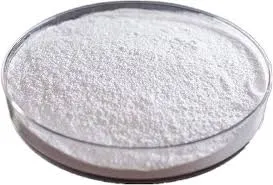
ກ.ກ. . 28, 2024 09:25 Back to list
Applications and Benefits of Hydroxyethyl Cellulose in Various Industries and Formulations
Hydroxyethyl Cellulose A Versatile Polymer with Diverse Applications
Hydroxyethyl cellulose (HEC) is a non-ionic, water-soluble polymer derived from cellulose, a natural biopolymer found in the cell walls of plants. HEC is produced through the chemical modification of cellulose, specifically by the reaction of ethylene oxide with hydroxyl groups in cellulose. This modification enhances the solubility of cellulose in water, giving rise to a compound with unique properties that find applications in various industries including pharmaceuticals, cosmetics, construction, and food.
One of the most significant characteristics of HEC is its ability to form clear, viscous solutions in water. This property makes HEC an excellent thickening agent, and it is widely utilized in cosmetic formulations such as shampoos, lotions, and creams. The ability to control the viscosity of cosmetic products is crucial for ensuring proper application, stability, and user satisfaction. HEC not only thickens formulations but also provides emulsion stability, making it an invaluable ingredient in many skincare products.
Hydroxyethyl Cellulose A Versatile Polymer with Diverse Applications
Another important application of HEC is in the construction industry. As a water-retaining agent in cement-based products, HEC contributes to improved workability and handling properties of mortars and plasters. It prevents the rapid evaporation of water from these mixtures, allowing for proper curing and enhancing the strength of finished products. This property is particularly beneficial in hot weather conditions where water evaporation can lead to performance issues.
hydroxyéthyl cellulose

HEC is also utilized in the food industry, where it functions as a thickener, stabilizer, and emulsifier. It can improve the texture and mouthfeel of various food products, from sauces to dressings. Given its non-toxic and safe profile, HEC has been approved for use in food applications in many countries, making it a suitable alternative to synthetic thickeners.
Moreover, HEC exhibits excellent biodegradability, which aligns with the growing demand for sustainable and eco-friendly materials. Its natural origin and minimal environmental impact make HEC a favorable choice for formulations targeting the environmentally conscious consumer.
HEC's versatility is further enhanced by its modifiable properties. By changing the degree of substitution - the number of hydroxyethyl groups attached to the cellulose backbone - manufacturers can tailor the viscosity, solubility, and overall performance of HEC to meet specific application requirements. This adaptability allows industries to create customized products that can fully exploit the advantages of HEC.
In conclusion, hydroxyethyl cellulose is a multifaceted polymer with a broad spectrum of applications across various sectors. Its ability to enhance formulations by providing thickening, stabilizing, and emulsifying properties makes it an indispensable ingredient in numerous products. As industries increasingly prioritize sustainability, the biodegradable nature of HEC positions it as an attractive alternative to more traditional synthetic polymers. With ongoing research and development, the potential applications of hydroxyethyl cellulose continue to expand, ensuring its relevance in the future of material science and formulation chemistry.
-
Unlocking the Benefits of HPMC Products: A Gateway to Versatile Applications
NewsAug.07,2025
-
Unleashing the Potential of HPMC Ashland: A Comprehensive Look
NewsAug.07,2025
-
Tile Bonding Cellulose: The Key to Superior Adhesion and Durability
NewsAug.07,2025
-
Hydroxypropyl Methylcellulose Powder: The Versatile Component in Modern Pharmaceuticals
NewsAug.07,2025
-
Hydroxyethyl Cellulose: The Versatile Solution for Various Industries
NewsAug.07,2025
-
Hydroxyethyl Cellulose (HEC): The Versatile Polymer for Various Applications
NewsAug.07,2025







